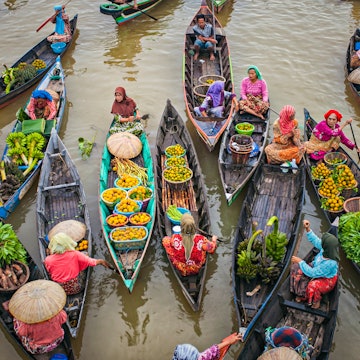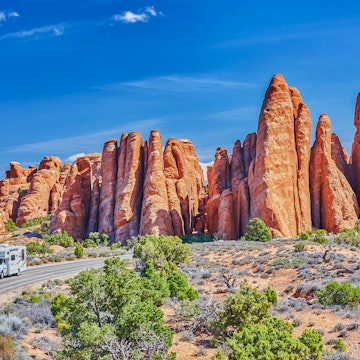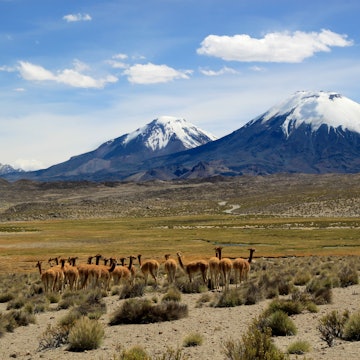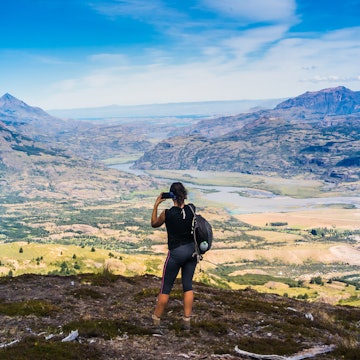

Enjoy all the splendors of the world. DC_Colombia / Getty Images
Backpacking isn’t a new concept, but it is one with varied connotations. It can refer to low-budget globetrotting with little more than a passport, ticket stubs, and a little fear and excitement for good measure, often to relatively cheap, flavorful destinations like Thailand, Mexico, and South America. Backpacking can also refer to rugged forays into the backcountry, whether for a weekend or a longer trek along trails like the Pacific Crest Trail, the GR20 in Corsica, or the Inca Trail in Peru.
In either form, backpacking is really shorthand, an attempt to pin down an attitude toward adventure, a subculture, and a style of travel that’s challenging to articulate. So when we talk about backpacking, what do we mean – really?
To some, backpacking evokes a montage of cities, beaches, hostels, and a few architectural marvels or UNESCO world heritage sites for good measure. Perhaps you’ll meet a new love from a distant corner of the globe, or realize a kindred spirit was in your orbit the whole time once the right adventure casts them in a brand new light.
You might eat the wrong thing or step in the wrong place, adding illness or injury to your library of travel tales to pull out for friends back home or new acquaintances a few hostel common rooms down the road. There are new skills to learn, from scuba diving to the art of working remotely from whatever WiFi connection makes itself available. To backpack is to open oneself up to a host of new experiences.
The origins of backpacking
Backpacking also comes down to gear – the term, after all, refers to the piece of equipment on which travelers rely for relatively nimble movement from place to place. Originally designed for forays into the outdoors, a large-format backpack is constructed of rugged fabrics and outfitted with straps and clips and pockets to hold everything from ice axes and trekking poles to hair combs and slinky little numbers for foreign nightclubs, depending on whether you've got summits or swiping right in your sites.
The backpack as we know it is less than a hundred and fifty years old, dating back to a design out of Duluth, Minnesota designed for hikers who might also want to portage a canoe. The gear turned into a verb in the early 20th century, when outdoor recreation started to become more popular, especially with European alpinists. Backpacks kept evolving with new innovations like frames, zippers, and hip belts that made them comfortable enough to inspire more people to try long hiking treks, and eventually to take their packs on worldwide travels from country to country.
By the 1960s, backpacks were synonymous not only with outdoor adventures, but world travel, aided by new guidebooks designed specifically for budget travelers packing light. And whether you’re walking for mile after mile with a camp stove, water filter, and warm layers in your pack or it’s stuffed with city maps, shower shoes, and maybe a souvenir or two, the essence of backpacking remains the same – how can you see as much as possible, for as long as possible, while stretching your dollars or rubles or yen as far as possible?

Away from it all
From mountain peaks and hidden desert oases, tents and tramping far beyond the reach of the nearest cellphone tower to museums and piazzas, watching scenery unfurl out the window of a train car, backpacking is as broad in purview as there are places to explore. When it comes to what “true” backpacking might be, there really is no right or wrong answer. Backpacking is backpacking, from the Torres Del Paine to the Hon Khoi peninsula, from full moon beach parties to scrambling up Mount Kinabalu, from the taverns of Goa to powdery slopes of the Rhodope Mountains.
A backpack is nothing but a tool, it can help undo any twists and locks that have come up in life and need fixing. The pockets and compartments can be used however you like; just make sure, wherever you take it, you tuck away some memories. The world is waiting – how you pack for it is entirely up to you.
You might also like: What I learned from backpacking in my 20s and 30s
Thru-hikes to squeeze into a busy travel schedule
How vanlifers and RVers are coping with the COVID-19 pandemic














